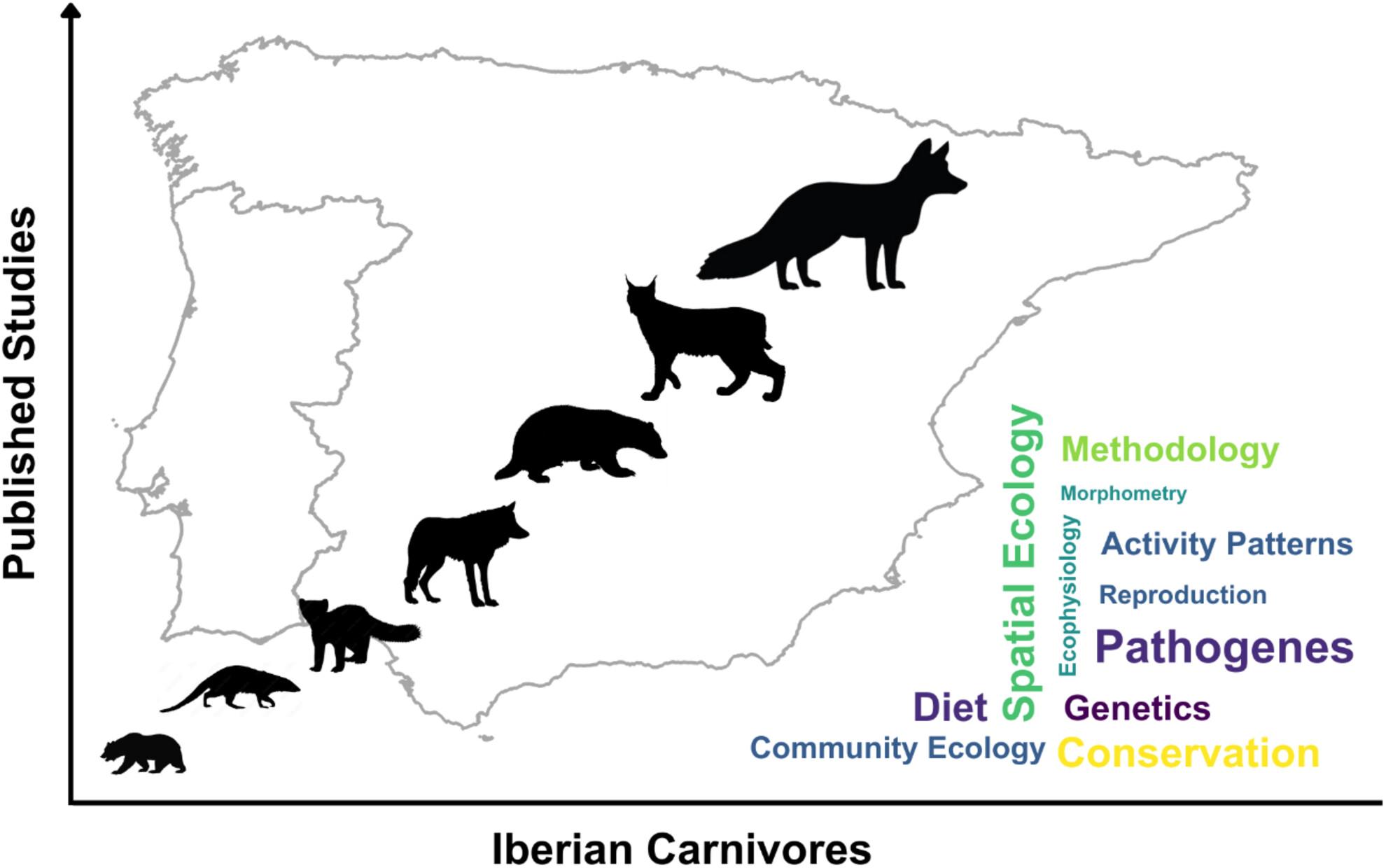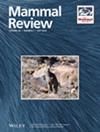伊比利亚野生食肉动物的三十年研究:趋势、亮点和未来方向
IF 4.4
2区 生物学
Q1 ECOLOGY
引用次数: 0
摘要
哺乳动物-食肉动物(食肉动物)是景观的重要组成部分,因为它们对低营养级物种的自上而下的影响,以及对自下而上的过程的敏感性,例如食物资源有限(例如,由于气候不稳定)。为了更清楚地了解它们在伊比利亚生态系统中的功能作用,并制定有效的管理和保护计划,总结可为决策过程提供信息的可用区域知识至关重要。我们综述了30岁以上伊比利亚野生食肉动物的生物生态学研究 年(1990-2020),并确定关键的知识差距和未来研究的优先途径。在系统回顾科学文献的基础上,我们旨在:1)总结当前的知识;2) 评估物种和生态区的代表性;3) 确定所涉及的关键研究主题和缺乏投资的主题;4)提出未来的关键研究重点。我们审查了920篇涉及野生伊比利亚哺乳动物食肉动物的同行评审文章,重点关注不同的生物生态问题。我们发现,在调查的主题和物种以及探索的研究领域(生态区)中存在相当大的异质性,研究人员确定的研究重点与知识差距不匹配。我们建议,未来的研究应优先考虑:1)位于该物种欧亚范围西南边界的后缘种群,因此对伊比利亚生态系统日益破碎和干旱特别敏感,而且研究较少(例如,棕熊、白鼬、欧洲水貂和松貂);2) 研究较少的主题,如形态计量学和身体状况、生态生理学和生殖生物学,所有这些都为物种的管理和保护提供了重要信息,3)缺乏对物种适应环境和人类环境的研究的特定生态区(例如伊比利亚北部生态区、伊比利亚针叶树林和伊比利亚西北部山地林)。我们的综述为支持伊比利亚食肉动物种群的未来研究提供了必要的背景。本文章由计算机程序翻译,如有差异,请以英文原文为准。

Three decades of research on Iberian wild Carnivora: trends, highlights, and future directions
- Mammalian carnivores (Carnivora) are crucial components of landscapes, because of both their top-down effects on lower trophic level species and their sensitivity to bottom-up processes, such as limited food resources (e.g. due to climate instability). To understand their functional role in Iberian ecosystems more clearly, and to define effective plans for their management and conservation, it is crucial to sum up the available regional knowledge that can inform decision-making processes.
- We review bio-ecological research on wild Iberian carnivores over 30 years (1990–2020) and identify key knowledge gaps and priority avenues for future research. Based on a systematic review of the scientific literature, we aimed to: 1) summarise current knowledge; 2) assess species and ecoregion representativeness; 3) identify key research topics addressed and those lacking investment and 4) suggest key future research priorities.
- We examined 920 peer-reviewed articles involving wild Iberian mammalian carnivores, focusing on different bio-ecological issues. We found considerable heterogeneity in the topics and species investigated, as well as in the study areas (ecoregions) explored, with a mismatch between the research priorities identified by researchers and the knowledge gaps.
- We suggest that future research should prioritise: 1) rear-edge populations that are at the southwestern limits of the species' Eurasian range, thus being particularly sensitive to the increasing fragmentation and aridity of Iberian ecosystems, and that were less studied (e.g. brown bear Ursus arctos, stoat Mustela erminea, European mink Mustela lutreola and pine marten Martes martes); 2) less-studied topics, such as morphometry and body condition, ecophysiology, and reproductive biology, all of which provide essential information for species' management and conservation and 3) specific ecoregions for which studies on species' adaptations to environmental and anthropic contexts are lacking (e.g. northern ecoregions of Iberia, Iberian conifer forests and Northwest Iberian montane forests). Our review provides the necessary background to support future research on carnivore populations in Iberia.
求助全文
通过发布文献求助,成功后即可免费获取论文全文。
去求助
来源期刊

Mammal Review
生物-动物学
CiteScore
12.20
自引率
4.10%
发文量
29
审稿时长
>12 weeks
期刊介绍:
Mammal Review is the official scientific periodical of the Mammal Society, and covers all aspects of mammalian biology and ecology, including behavioural ecology, biogeography, conservation, ecology, ethology, evolution, genetics, human ecology, management, morphology, and taxonomy. We publish Reviews drawing together information from various sources in the public domain for a new synthesis or analysis of mammalian biology; Predictive Reviews using quantitative models to provide insights into mammalian biology; Perspectives presenting original views on any aspect of mammalian biology; Comments in response to papers published in Mammal Review; and Short Communications describing new findings or methods in mammalian biology.
 求助内容:
求助内容: 应助结果提醒方式:
应助结果提醒方式:


